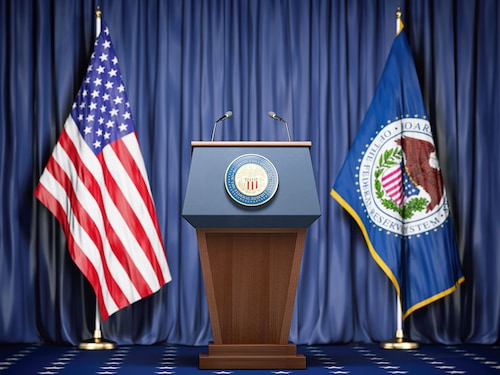In an era of populism, central bank independence is at risk
Central banks must fight for their independence, despite cracks in the status quo


Throughout his first presidency, Donald Trump pressured the Federal Reserve to cut rates, and he shows no sign of changing his rhetoric. At a press conference in August 2024, Trump declared, “I feel the president should have at least a say … I think I have a better instinct than, in many cases, people that would be on the Federal Reserve — or the chairman."
Trump’s economic vision foreshadows significant political and economic clashes in the years ahead. Should inflation surge in an already capacity-strained economy, the Federal Reserve may be forced to maintain high interest rates, setting the stage for a protracted conflict between a Trump administration and the central bank.
Trump would not be the first populist leader to attempt to seize the reins of independence, but I believe we must insist on keeping bank and state apart.
Turkey offers a cautionary tale: Since 2016, the country has dismissed six central bank governors for resisting political interference. These dismissals, coupled with legal constraints on rate hikes, have fueled rampant inflation, soaring from 10% in 2019 to a staggering 85% in 2022. In 2024, average inflation remained little less than 50%.
In the U.K., Liz Truss briefly considered revising the Bank of England’s charter in 2022, a move billed as “deeply irresponsible" by the opposing party and torpedoed by the markets.
Other attempts have prospered: The Reserve Bank of New Zealand introduced limitations on qualifications for board members (to exclude macroeconomics professors) and made appointments the responsibility of the minister of finance.
Meanwhile, central banks worldwide are increasingly populated by politically connected individuals.
It’s easy to see why. Monetary policy can serve short-term political objectives, such as appeasing interest groups, facilitating deficit financing or stimulating the economy ahead of elections.
Central banks haven’t always operated independently in fact, independence is a relatively recent phenomenon.
Before 1980, only a handful of central banks — such as the Bundesbank and the U.S. Federal Reserve — enjoyed significant autonomy. The Bank of England, for example, did not achieve independence until 1998.
The inflation crises of the 1970s spurred reforms across developed nations and the East Asia-Pacific during the 1980s. Policymakers came to realize that allowing central banks to prioritize price stability resulted in more effective monetary policy. This shift ushered in an era of remarkable economic stability, spanning the three decades up to 2008, often referred to as the Great Moderation.
Granting central banks independence offers two main benefits:
It’s perhaps unsurprising that 62% of central bank governors perceive no threat to their independence. However, only 13% of economists share this confidence. Prominent figures such as Charles Goodhart and Willem Buiter have questioned whether central bank independence is still viable, or whether it was merely a product of its time. And Milton Friedman long argued that central bank independence lacks democratic legitimacy, advocating instead for rule-based monetary policy to constrain discretion.
Economic critiques underpin much of the current skepticism among economists. Events ranging from the 2008 financial meltdown to the recent inflationary surge have cast doubt on whether central banks can continue to deliver on their mandates. The 2008 Global Financial Crisis shattered the belief that central banks had found the key to perpetual economic stability.
Economists see three main threats to the status quo:
Central banks face mounting legitimacy challenges due to their struggles with inflation — both pre-pandemic lows and post-pandemic highs — and the broader critiques related to 2008 financial crisis-era actions. Measures like quantitative easing (QE) and near-zero interest rates, though vital for stabilizing economies, have blurred the lines between monetary and fiscal policy, benefiting debtors at the expense of savers and raising concerns about redistributive effects.
Recent crises have forced central banks to expand beyond their core mandate of price stability, taking on roles like financial supervision and balance sheet management, which deepen their political entanglement. While addressing issues like climate change and redistribution can offer support, such involvement risks diluting their effectiveness, compromising neutrality and inviting accusations of overreach.
Critics increasingly question the legitimacy of unelected institutions wielding vast power, revealing the fragile political underpinnings beneath their strong economic rationale. Once regarded as nearly infallible, central banks are now seen as independent agencies with delegated authority that must be held accountable. Their proximity to political decisions during crises has further fueled criticism, undermining trust and feeding populist narratives.
Maintaining central bank independence, even amid populist pressure and some skepticism from economists, requires addressing these criticisms with solutions that preserve effectiveness and legitimacy.
First Published: Mar 18, 2025, 11:53
Subscribe Now